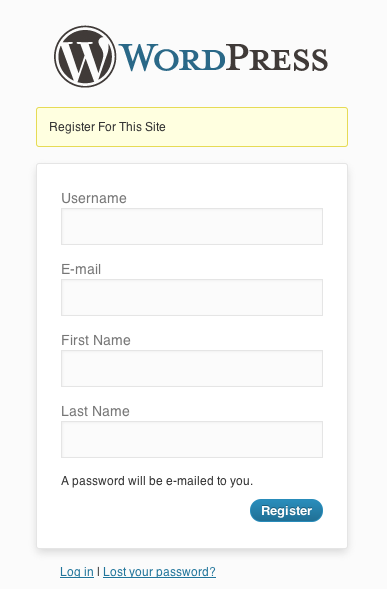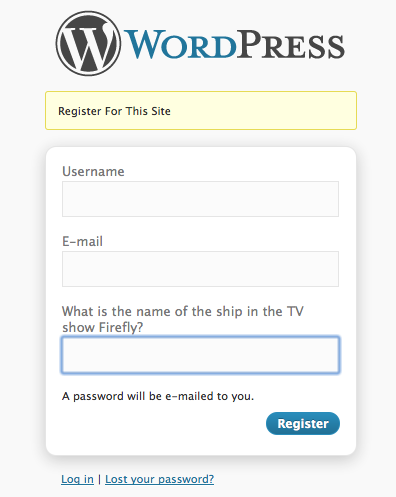
<?php
add_action( 'register_form', 'additional_profile_fields' );
function additional_profile_fields() { ?>
<p>
<label><?php _e('First Name') ?><br />
<input type="text" name="first_name" id="first_name" class="input" size="25" tabindex="20" /></label>
</p>
<p>
<label><?php _e('Last Name') ?><br />
<input type="text" name="last_name" id="last_name" class="input" size="25" tabindex="20" /></label>
</p>
<?php }
add_action( 'register_post', 'add_register_field_validate_first_name', 10, 3 );
function add_register_field_validate_first_name( $sanitized_user_login, $user_email, $errors) {
if (!isset($_POST[ 'first_name' ]) || empty($_POST[ 'first_name' ])) {
return $errors->add( 'firstnameempty', '<strong>ERROR</strong>: Please provide a first name.' );
}
}
add_action( 'register_post', 'add_register_field_validate_last_name', 10, 3 );
function add_register_field_validate_last_name( $sanitized_user_login, $user_email, $errors) {
if (!isset($_POST[ 'last_name' ]) || empty($_POST[ 'last_name' ])) {
return $errors->add( 'lastnameempty', '<strong>ERROR</strong>: Please provide a last name.' );
}
}
add_action( 'user_register', 'insert_register_fields' );
function insert_register_fields( $user_id ) {
$first_name = apply_filters('pre_user_first_name', $_POST['first_name']);
$last_name = apply_filters('pre_user_last_name', $_POST['last_name']);
update_user_meta( $user_id, 'first_name', $first_name );
update_user_meta( $user_id, 'last_name', $last_name );
}

